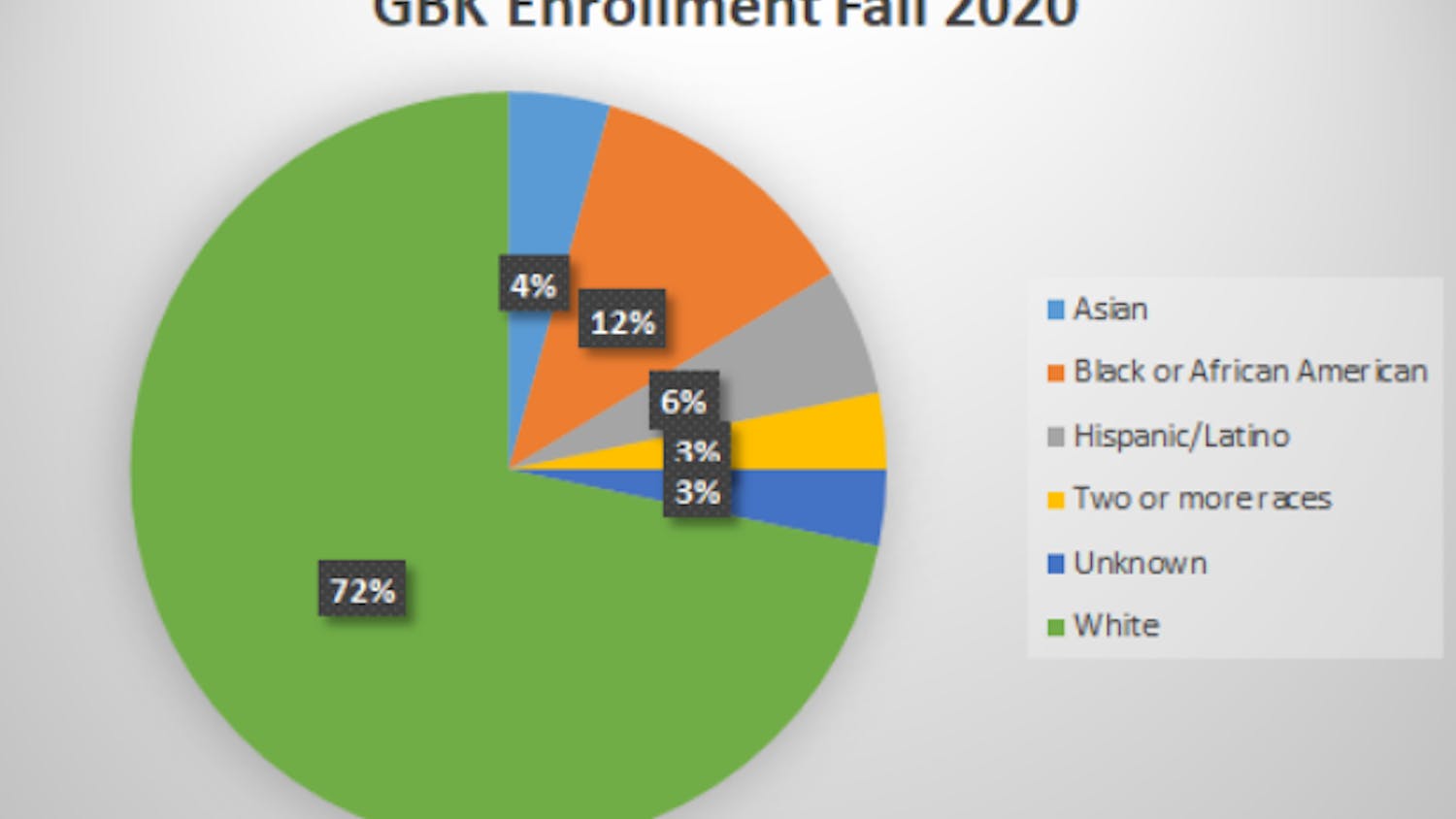When has it been unacceptable to be white? The white population in America benefits from better education, higher income, lower unemployment rates, lighter criminal sentencing and many other privileges compared to those of blacks and Hispanics in America. In light of recent attempts to highlight these inequalities through movements like Black Lives Matter or the peaceful protests against the National Anthem, white nationalists have made a resurgence with a new narrative.
On Oct. 20, signs were posted around the Boston College campus that read “I want you to love who you are/Don’t apologize for being white.” Shortly after this incident, on Halloween day, an anonymous user on a chat group called 4chan posted a message urging people to hang posters reading “It’s Okay to be White” around college campuses and other public places. The user suggested that the reactions to these posters would convince “normies” -- normal white Americans -- to become white supremacists.
Aside from its intention to recruit white millennials to white supremacy groups, what is wrong with the message, “It’s Okay to be White”?
The 4chan user who created this movement was very strategic in wording the poster. The poster does not explicitly suggest anything wrong. The words alone are innocuous, but when you decode the meaning and the intention behind the words, you find a covertly racist message advocating for white supremacy and against any efforts to advance minority populations.
There is a new narrative being used to portray white people as victims. Many white people are convinced that the frustrations of minority groups, in regards to the continuous inequalities that that they face, are targeted towards them. They feel that since they did not directly contribute to the historical oppression of blacks -- or other minority groups -- they should not feel responsible for the current state of minorities in America. They feel that the discussion on how white people have historically oppressed people is an attack on them currently. This sentiment builds on the idea that they are victims being made to feel as if it is not okay to be white because of the history of white oppressors. The poster aims to strengthen this feeling and further divide whites from minorities by inciting anger from this perceived victimization.
The tactic being used by the creator of the poster is called the Straw Man Fallacy. The Straw Man Fallacy is used when certain points of an argument are emphasized or diminished in order to represent the argument in a way that is easier to critique. The creator has emphasized the frustrations of minorities about their historical oppression by white people and has twisted the narrative to suggest that minorities do not think it is okay to be white.
The poster also deliberately uses a phrase that is very similar to that of the Black Lives Matter movement. The creator of the poster seems to be making a mockery of the movement and is clearly not able to accept the meaning behind Black Lives Matter. Black lives are emphasized in the movement because they seem to matter a lot less than they should. There is no reason to believe that it is not okay to be white, therefore there is no need for this movement. The creation of movements like this will heighten racial tensions within the country and further decelerate progress.
Mercer is one of many college campuses where these posters were put up. The posters were quickly removed but there has been no formal statement from the university acknowledging the issue. There has also been very little discussion regarding the posters, especially not collaboratively amongst different races. It is ironic that we, as students, have made the decision to attend a university where we are given the opportunity to interact with such a diverse group of people, but we do not take full advantage of the opportunities we have to discuss issues like this. It is more common for us to silence the issue and act as if racial tensions do not exist. Being at a university like Mercer gives us the chance to gain perspectives that we may not get elsewhere and it is imperative that we talk about issues so that we can consider different points of views. For example, maybe before reading this article, there was a person who saw no issue with the posters but after reading it they have gained a new perspective and have considered my point of view. Engaging in conversations could be the first step to coming to a consensus on how problems like these can be solved
Opinion: “It’s Okay to be White” posters displayed throughout the country

A college bulletin board.




